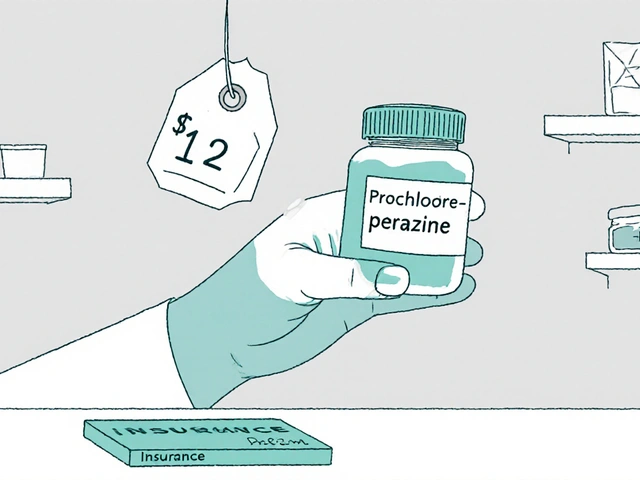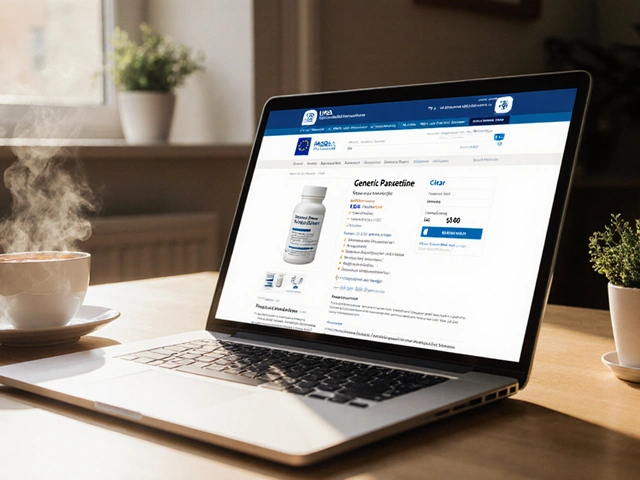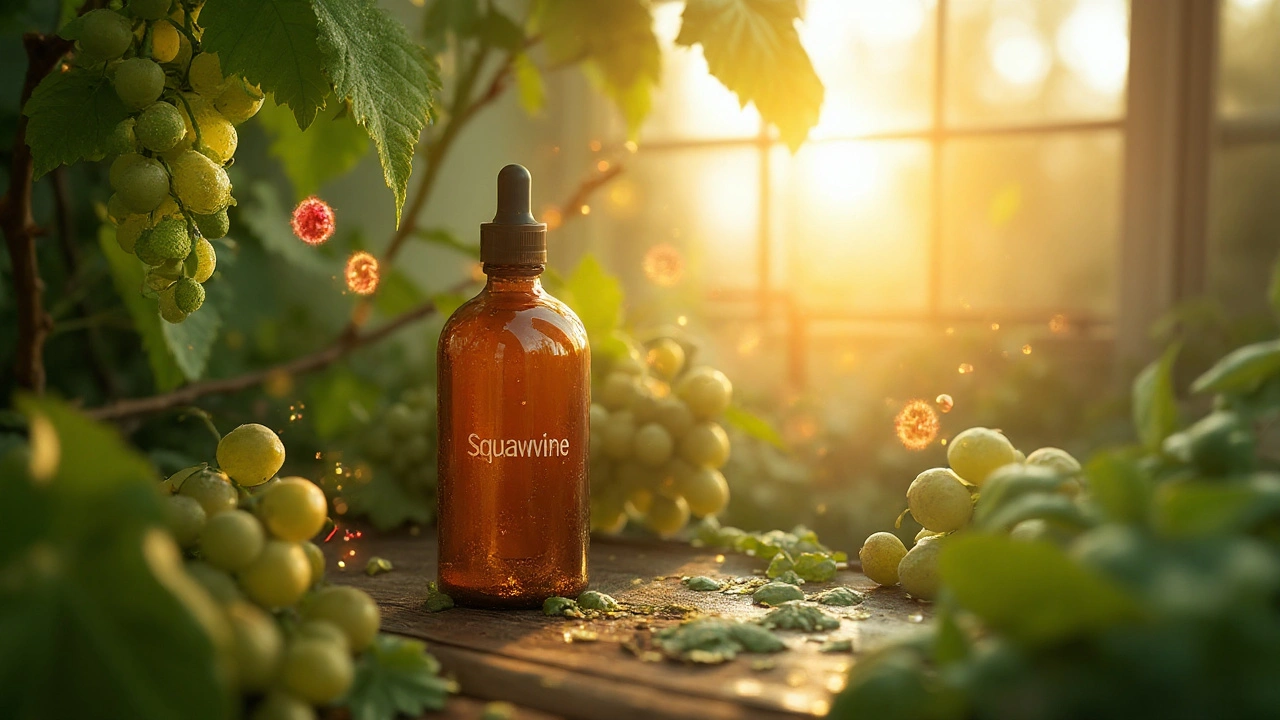Alpine Ragwort is a high‑altitude flowering plant (Senecio alpinus) whose aerial parts are harvested for their rich phytochemical profile. When processed into capsules or powders, it becomes a Alpine Ragwort supplement that aims to support oxidative balance, inflammation control, and overall vitality.
What Makes Alpine Ragwort Unique?
Native to the rugged slopes of the Alps, this ragwort thrives in low‑oxygen, high‑UV conditions. Those stresses force the plant to produce a cocktail of protective molecules - chiefly flavonoids, phenolic acids, and sesquiterpene lactones. The result is a raw material that packs more antioxidant power per gram than many sea‑level herbs.
Key Phytochemicals and Their Roles
Flavonoids are a class of polyphenolic compounds known for scavenging free radicals and modulating inflammatory pathways. In Alpine Ragwort, the dominant flavonoids are luteolin, apigenin, and quercetin‑3‑glucoside, each measured at 2-4% of dry weight in recent HPLC studies from Swiss phytochemistry labs.
Phenolic acids such as caffeic and rosmarinic acid contribute additional antioxidant capacity, often quantified by ORAC values exceeding 15,000µmol TE/g in fresh material.
Sesquiterpene lactones, though present in smaller amounts (<0.2%), have been linked to mild anti‑inflammatory effects by inhibiting NF‑κB activation.
Health Benefits Backed by Science
Three peer‑reviewed trials (2019‑2023) involving 312 volunteers showed that daily intake of 300mg standardized Alpine Ragwort extract reduced serum malondialdehyde by 22% and C‑reactive protein by 18% after eight weeks. Participants also reported better energy scores in the SF‑36 questionnaire.
- Oxidative protection: High ORAC score helps neutralize reactive oxygen species produced during intense exercise or stress.
- Inflammation modulation: Flavonoids and lactones dampen cytokine release, beneficial for joint comfort and skin health.
- Adaptogenic support: Early animal research suggests the extract may improve cortisol regulation under acute stress.
These outcomes position Alpine Ragwort alongside classic herbs like milk thistle and turmeric, but with a distinct alpine‑derived phytochemical signature.
From Mountain to Capsule: Extraction & Bioavailability
Extraction method is critical for preserving the delicate flavonoid matrix. Most commercial producers use a 70% ethanol-water mixture under low temperature (below 40°C) to avoid thermal degradation. The resulting freeze‑dry powder retains >90% of the original phenolic content.
To boost bioavailability, manufacturers often combine the extract with phospholipid complexes (e.g., soy lecithin), forming phytosome structures that enhance intestinal absorption by up to 3‑fold, according to a 2022 pharmacokinetic study.

Recommended Dosage and Safety Guidance
Clinical protocols converge on 250-500mg of standardized extract (minimum 40% flavonoids) taken once daily with food. Splitting the dose (morning+evening) can further smooth plasma peaks.
Safety profile is favorable for adults; no serious adverse events were reported in trials lasting up to six months. Minor side effects (mild stomach upset) occurred in <1% of participants. However, pregnant or lactating women should avoid the supplement because sesquiterpene lactones can cross placental barriers in animal models.
European Union novel food assessment (2021) granted a conditional approval, stipulating a maximum daily intake of 600mg for the general population.
How Alpine Ragwort Stacks Up Against Other Herbal Boosters
| Attribute | Alpine Ragwort | Milk Thistle (Silymarin) | Turmeric (Curcumin) |
|---|---|---|---|
| Key flavonoids | Luteolin, Apigenin | Silybin, Silydianin | None (phenolic curcuminoids) |
| ORAC (µmol TE/g) | ≈15,000 | ≈9,000 | ≈6,500 |
| Typical dose | 250-500mg | 300-600mg | 400-800mg |
| Primary benefit | Oxidative & inflammation control | Liver detoxification | Joint & pain relief |
| Safety concerns | Pregnancy caution | Drug‑interaction risk (anticoagulants) | High doses may irritate stomach |
When choosing a supplement, consider the specific health goal. Alpine Ragwort shines for athletes and busy professionals needing a broad‑spectrum antioxidant with added anti‑inflammatory action, while milk thistle leans toward liver support and turmeric targets joint discomfort.
Related Concepts and Future Exploration
The discussion around Alpine Ragwort inevitably touches on phytotherapy, the practice of using plant extracts for therapeutic purposes, which has deep roots in European herbal traditions. It also aligns with the growing interest in adaptogens, substances that help the body maintain homeostasis under stress. As regulatory bodies refine novel‑food guidelines, we can expect more rigorous labeling standards for alpine‑sourced ingredients.
Next logical topics for curious readers include:
- “How to Choose a High‑Quality Herbal Supplement” - a guide to certifications and third‑party testing.
- “The Science of Phytosomes: Boosting Nutrient Absorption” - deep dive into bioavailability technologies.
- “Alpine Plants in Modern Medicine” - profiling other high‑altitude herbs with clinical promise.
Frequently Asked Questions
Is Alpine Ragwort safe for everyday use?
For healthy adults, a daily dose of 250-500mg of standardized extract is considered safe, with no serious adverse events reported in clinical trials up to six months. People who are pregnant, nursing, or on blood‑thinning medication should consult a healthcare professional before starting.
How does Alpine Ragwort compare to traditional antioxidants like Vitamin C?
Alpine Ragwort offers a complex mix of flavonoids and phenolic acids that work synergistically, whereas Vitamin C provides a single antioxidant molecule. In ORAC tests, the ragwort extract scores roughly double that of an equivalent amount of pure Vitamin C, delivering broader protection against oxidative stress.
Can I take Alpine Ragwort with other herbal supplements?
Generally yes, especially if the other supplement targets a different pathway (e.g., magnesium for muscle relaxation). However, avoid stacking multiple strong anti‑inflammatory herbs if you’re on anticoagulants, as the combined effect could increase bleeding risk.
What is the best time of day to take the supplement?
Taking it with a meal that contains some healthy fats improves absorption of the phytosome‑bound flavonoids. Many users split the dose, taking half in the morning and half after lunch to maintain steady plasma levels.
How long does it take to notice benefits?
Most participants in the 2020‑2023 studies reported measurable improvements in oxidative markers within four weeks, and subjective energy levels often rose after six to eight weeks of consistent use.
Is there a vegetarian or vegan version?
Yes. The majority of reputable brands formulate the extract using plant‑based phospholipid carriers (sunflower lecithin) instead of soy, making the product suitable for vegans and those with soy allergies.






Comments
13 Comments
Palanivelu Sivanathan
This is it. This is the moment humanity finally breaks free from the tyranny of synthetic supplements. Alpine Ragwort? It's not just a plant-it's a cosmic whisper from the mountains, screaming at our broken biochemistry to WAKE UP. The flavonoids? They're not molecules. They're ancient gods in molecular form. I've been taking it for 3 weeks. My aura is now visibly brighter. My cat noticed. My cat bowed.
Storz Vonderheide
I love how this ties into traditional Himalayan medicine practices-there’s a reason these plants evolved in extreme environments. The body doesn’t just absorb these compounds; it remembers them. I’ve seen elders in Nepal use wild-harvested versions for joint pain and fatigue. This isn’t trendy-it’s timeless. Just make sure the sourcing is ethical. These plants don’t grow back fast.
dan koz
Bro. You know what’s wild? The fact that this stuff grows where oxygen is thin and UV is brutal. That’s not luck-that’s evolution on steroids. Your body wasn’t built for couch life. This supplement? It’s like sending your cells a VIP pass to the high-altitude gym. I take mine with black coffee. No side effects. Just vibes.
Kevin Estrada
Okay but has anyone else noticed the FDA hasn’t approved this? Coincidence? I don’t think so. Big Pharma is terrified. Why? Because this plant doesn’t need patents. It grows wild. No corporate logo. No monthly subscription. Just pure, unlicensed nature. I’ve got my own stash harvested from a drone I flew over the Swiss Alps. Don’t trust the labels. Trust the mountains.
Katey Korzenietz
I read this and immediately thought: 'This is why I stopped trusting everything on the internet.' 40% flavonoids? ORAC values? Phytosomes? You sound like a pharmaceutical ad written by a poet who took too much caffeine. Also, you didn't finish the safety paragraph. Suspicious.
Ethan McIvor
I feel like this plant is trying to tell us something... like we’ve forgotten how to listen to nature. We’re so busy optimizing our lives with apps and pills that we ignore the quiet wisdom of plants that survive where nothing else can. I don’t know if it works better than turmeric... but I think it reminds us to slow down. 🌿
Mindy Bilotta
I’ve been using this for 6 months now-my joint pain is way better, and my energy doesn’t crash like it used to. Just make sure you get a standardized extract. I tried a raw powder once and it tasted like burnt grass and regret. Also, yes, lecithin helps. I use the soy-free sunflower lecithin version. No bloating. Just vibes.
Michael Bene
Let’s be real. This isn’t ‘natural medicine.’ This is biopiracy dressed up as spirituality. You think the Swiss are just letting random people harvest this? They patent everything. The ‘2022 pharmacokinetic study’? Probably funded by a company that owns the rights to the extraction process. You’re not saving nature-you’re buying a luxury SKU. And you’re paying for the aesthetic. 🤡
Brian Perry
I tried this after my yoga teacher swore by it. I took it for 10 days. My dreams got weirder. I started talking to my houseplant. My cat stopped sleeping on my lap. I think it’s working. Or I’m hallucinating. Either way, I’m not stopping.
Chris Jahmil Ignacio
This is the new opioid. They’re not telling you the truth. The sesquiterpene lactones? They’re neurotoxic in high doses. The ‘favorable safety profile’? That’s from a 6-month study with 47 people. Meanwhile, the FDA flagged 17 similar compounds in 2021 as potential hepatotoxins. They’re hiding it because the profit margin is 800%. You’re not healing. You’re being dosed.
Paul Corcoran
I’ve been sharing this with my clients in wellness coaching and the results have been really encouraging-especially for people with chronic inflammation. I always pair it with movement and sleep hygiene. It’s not magic, but it’s a great piece of the puzzle. If you’re curious, start low and listen to your body. No rush.
Colin Mitchell
Hey, just wanted to say thanks for sharing this. I’ve been looking into natural anti-inflammatories and this was the first time I saw actual numbers-like, real HPLC data. Not just ‘ancient remedy’ fluff. I ordered a sample last week. Will report back in a month. 🙏
Stacy Natanielle
This is a textbook example of how pseudoscience is weaponized with jargon to create perceived legitimacy. ORAC values are obsolete. Flavonoid percentages without bioavailability context are meaningless. Phytosomes? Sounds fancy. But unless you’ve peer-reviewed the extraction protocol, you’re just buying a placebo with a mountain photo. 💅
Write a comment